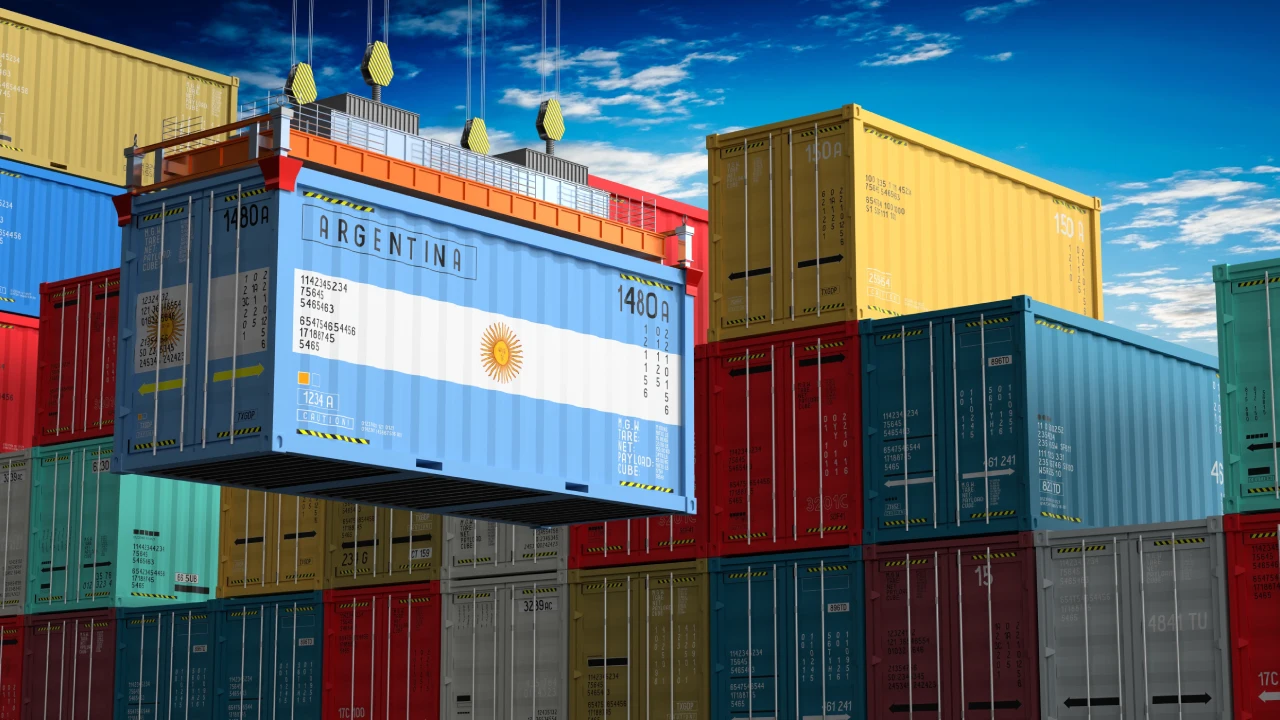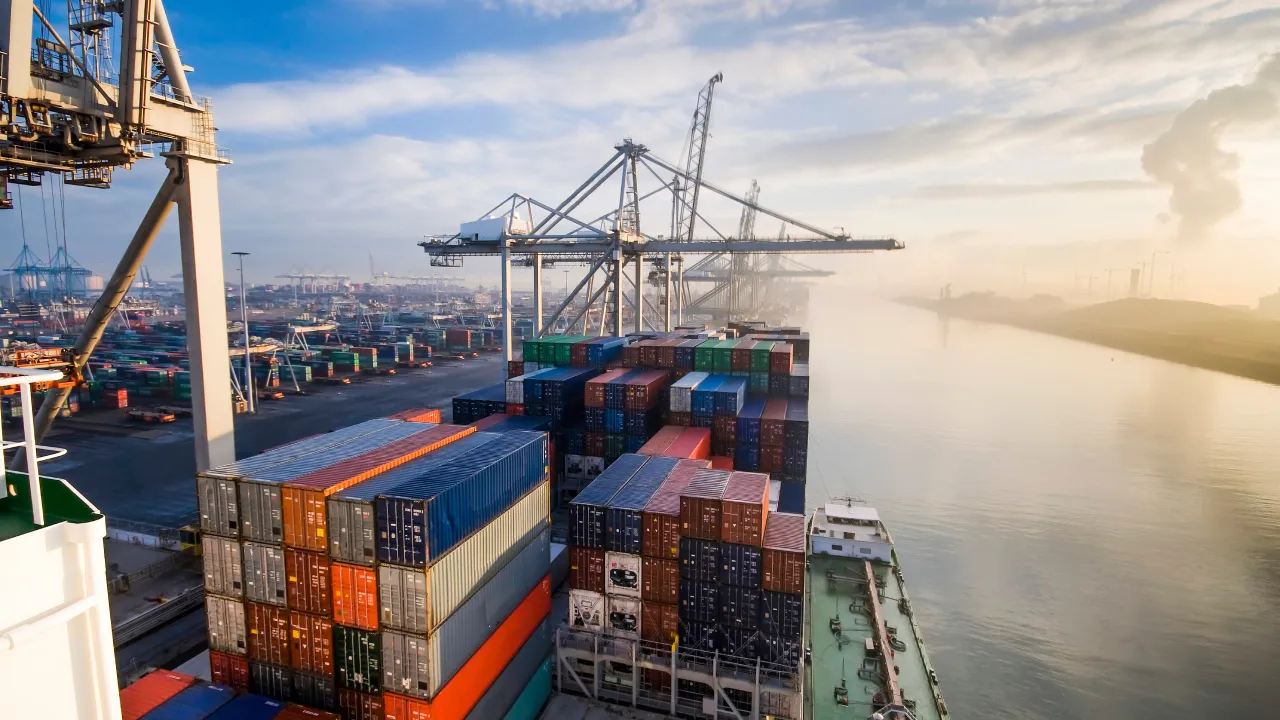
Key takeaways
- Argentina’s economic success and connection to global markets heavily rely on its maritime gateways, which facilitate both vast agricultural exports and diverse imports
- Argentina’s major ports are not interchangeable; each has a specialized role and unique capabilities
- All major ports boast strong multimodal connections (road, rail, river, and in some cases, air and pipeline), which are essential for efficient cargo movement throughout the country and to global markets
- Given the diverse nature of the ports and the complexities of international shipping, partnering with a knowledgeable freight forwarder to Argentina, like Atlantic Project Cargo, is essential for efficient, compliant, and optimized freight operations
Argentina, known for its enormous agricultural landscapes and rich natural resources, relies profoundly on its maritime gateways to connect with global markets. These busy hubs along its extensive coastline and major rivers are more than just points of freight to Argentina; they are vital arteries facilitating the flow of goods that drive the nation’s economy. From the bountiful grain exports that feed the world to the diverse imports that fuel domestic industries, Argentina’s top ports are critical to its international trade success. Join us as we explore the five most influential ports that anchor Argentina’s position in global commerce.
Port of Buenos Aires
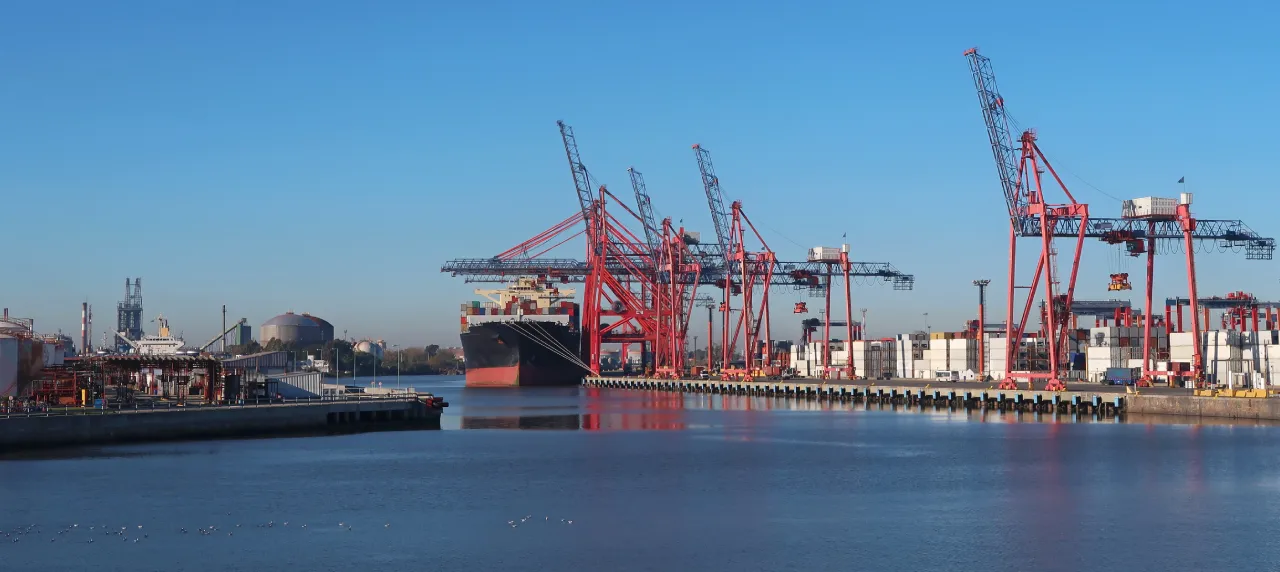
| Feature | Description |
|---|---|
| Location | Buenos Aires, Argentina (Along the Río de la Plata) |
| Port Authority | General Port Administration (Administración General de Puertos - AGP) |
| Port Type | Multimodal (handles containers, bulk goods, break-bulk cargo, and passengers) |
| Key Role |
Principal maritime port and leading transshipment point for Argentina's foreign trade; a major distribution hub for much of the South American continent due to river connections to Brazil, Paraguay, and Uruguay. |
| Historical Significance |
Founded as a port in 1580, suffered early closures and fostered smuggling due to Spanish colonial trade restrictions. |
| Major Construction |
The "Puerto Nuevo" (New Port) was constructed between 1884 and 1897, featuring a complex of four impounded docks. Dock Sud was added in 1911. |
| Cargo Volume |
~11 million metric tons of cargo; 1.1 million TEUs (twenty-foot equivalent units) of containerized cargo. Note: Dock Sud, south of the city, handles additional cargo (around 17 million metric tons annually). |
| Main Exports |
Agricultural products, especially soybeans and related products, meat and meat products, cereals, minerals, and chemicals. |
| Main Imports | Containers, vehicles, consumer goods, and more. |
| Trade Routes |
Serves vital trade routes, particularly to Europe (Atlantic Route), North America, Asia (Transpacific Route), and South American coastal routes (e.g., to Santos, Montevideo). |
| Multimodal Connectivity |
Connects to the rest of the country via river transport, trucks, and railways, allowing for efficient import and export across Argentina. |
The Port of Buenos Aires, Argentina’s largest and most pivotal port, boasts a rich history dating back to its founding by the Spanish navy in 1580. For centuries, it operated as a natural harbor, with larger ships often anchoring offshore and transferring cargo to smaller boats due to shallow waters and limited infrastructure. The need for a modern, deep-water port to solidify Argentina’s position as a trading nation became apparent in the late 19th century.
This led to the ambitious construction of Puerto Madero, designed by British engineer Sir John Hawkshaw, with work beginning in 1884 and concluding in 1897. This complex featured impounded docks, allowing water levels to be controlled for efficient cargo handling regardless of tides. Subsequently, the even larger “Puerto Nuevo” (New Port) was constructed between 1911 and 1925, ultimately making Buenos Aires the largest port in the Southern Hemisphere at the time. This continuous development has cemented its role as a critical hub for Argentina’s international trade.
Port Numbers
The Port of Buenos Aires is identified by the UN/Locode ARBUE. It is a major port of freight to Argentina that handles a significant volume of cargo annually, with statistics indicating around 11 million metric tons of cargo passing through its main facilities each year. In terms of container traffic, it is responsible for approximately 62% of Argentina’s total container cargo, handling over 1.1 million TEUs (Twenty-foot Equivalent Units) annually. The port consistently sees a high number of vessel arrivals, with figures often around 1,200 to 1,900 ships per year. It features numerous berths (around 17) across its various terminals, including those within Puerto Nuevo and the adjacent Dock Sud.
Exports
Argentina’s primary exports through this port are heavily influenced by its agricultural prowess. Key export commodities include:
- Agricultural Products
Grains (especially soybeans and corn), cereals, fats and oils, and their derivatives are a significant portion of exports
- Meat and Dairy Products
Beef and related products, as well as various dairy items, are also major exports
- Manufactured Goods
Finished goods, motor vehicles and parts, chemicals and related products, and wood and timber products contribute substantially to export volumes
- Other
Fruit, juices, and some crude oil and fuels are also exported
Imports
The port serves as the main entry point for a wide array of goods essential for Argentina’s industries and consumer markets. Major imports include:
- Intermediate Goods
Products that are used in the production of other goods
- Capital Goods
Machinery, equipment, and parts and accessories for capital goods are crucial for industrial development
- Fuels and Lubricants
These are vital for energy consumption across various sectors
- Consumer Goods
Finished consumer products, as well as a significant volume of automobiles and automobile parts, are imported to meet domestic demand
- Chemical Products
A broad range of chemicals is imported for industrial processes - Iron and Steel
These materials are essential for construction and manufacturing
Need a reliable freight forwarder to Argentina?
Atlantic Project Cargo is your trusted partner for freight forwarding of oversized cargo – we assist with the shipping of agricultural, construction, and industrial machinery.
Port of Rosario

| Feature | Description |
|---|---|
| Location | On the western shore of the Paraná River, approximately 550 km upstream from the Atlantic Ocean, within Santa Fe Province, Argentina. |
| Port Authority | ENAPRO (Ente Administrador del Puerto Rosario), a public company overseen by the provincial government. |
| Port Type | Inland River Port, predominantly a bulk cargo port. It is also considered a natural harbor due to the advantageous configuration of the Paraná River. |
| Key Role | The Port of Rosario is Argentina's main agri-industrial hub and a significant goods-shipping center. It is the epicenter of grain and soybean production and export in Argentina, handling over 80% of the country's cereal and cereal byproduct exports. It also plays a growing role in lithium exports. |
| Historical Significance | Established as a city in 1852 and officially declared a port in 1860, it rapidly grew with the development of Argentine agriculture, becoming a leading grain export hub. |
| Major Construction | Recent developments include investments in expanding infrastructure and upgrading storage facilities for new cargo types, such as lithium, and the development of a second lithium storage facility. |
| Cargo Volume | The Rosario export hub (including surrounding terminals) has a theoretical annual loading capacity of approximately 166 million tons of grains, 94 million tons of by-products (meals/pellets), 47 million tons of oil, and 19 million tons of biodiesel. In a normal year, about 80% of Argentina's grain, meal, and oil exports leave from the ports of Rosario. |
| Main Exports | Soybeans, corn, wheat, processed oilseed products (meals/pellets, oils), biodiesel, and increasingly, lithium carbonate. It also exports other agricultural products, meat, and lumber. |
| Main Imports | While primarily an export port, it handles bulk cargoes such as fertilizers and steel billets for discharge. |
| Trade Routes | Connects to Buenos Aires, Montevideo, and major Atlantic export terminals via the Paraná River, ultimately linking to international markets. It is also part of the Bi-Oceanic Corridor, joining the Atlantic with the Pacific Ocean via Buenos Aires, Rosario, Córdoba, the Cuyo region, and Valparaíso, Chile. It forms an axis of the Paraguay-Paraná waterway. |
| Multimodal Connectivity |
River – Located on the Paraná River, allowing access for vessels up to Panamax size downstream. Road – Converged by multiple national and provincial roads and highways, with terminals having significant truck receiving and parking capacities. Rail – Connected by railway lines, notably the Nuevo Central Argentino, linking with Córdoba and Zárate (Buenos Aires Province). Air – Serviced by the Rosario International Airport, refurbished for cargo traffic. |
The Port of Rosario, located on the western bank of the Paraná River in Santa Fe province, has a history deeply intertwined with Argentina’s agricultural expansion. While settlements in the area date back to the 17th century, Rosario gained official city status in 1852 and was declared a port in 1860. Its strategic position on the Paraná, approximately 550 km upstream from the Atlantic Ocean, became paramount with the advent of the railway. The completion of the Central Railroad in 1863, linking Rosario to the interior, ushered in a new era of prosperity, transforming it into a vital conduit for the nation’s burgeoning grain exports. Throughout the late 19th and early 20th centuries, significant upgrades to its harbor facilities allowed Rosario to solidify its reputation as one of the world’s leading grain ports. By 1960, it had even surpassed the Port of Buenos Aires as Argentina’s primary grain export hub, a testament to its specialized infrastructure and strategic location for agricultural trade.
Port Numbers
The Port of Rosario is identified by the UN/Locode ARROS. It forms the core of the “Greater Rosario” port complex, which includes several other important terminals along the Paraná River. This hub handles a massive volume of freight to Argentina. While specific overall annual tonnage can fluctuate with harvests, the Greater Rosario region is responsible for a significant majority of Argentina’s grain, oilseed, and by-product exports, often accounting for around 70-80% of the national total. The port has extensive infrastructure for receiving cargo by truck and rail, with daily unloading capacities for thousands of trucks and a significant number of railway wagons. Its main channel can accommodate vessels up to Panamax size, benefiting from a naturally advantageous depth that allows for large cargo vessels.
Exports
- Grains
Primarily soybeans, corn, and wheat
- Oilseeds and By-products
Soybean meal, soybean oil, and other derivatives from crushing processes are major exports
- Other Agricultural Products
To a lesser extent, exports can also include other agricultural commodities like barley, rice, and sometimes citrus fruits
- Manufactured Goods
While the focus is agricultural, the industrial development around Rosario also means some manufactured goods, such as agricultural machinery and processed foods, are exported
Imports
While heavily export-oriented, the Port of Rosario does handle some imports, generally those supporting the regional industries and agricultural sector. These can include:
- Fertilizers and Agricultural Inputs
Essential for the farming industry.
- Machinery and Equipment
For industrial and agricultural use.
- Chemical Products
For various industrial processes.
Port of Bahía Blanca

| Feature | Description |
|---|---|
| Location | Situated on the Atlantic coast of Argentina, in the southwest of Buenos Aires Province, approximately 640 km south of Buenos Aires City. It's located on the Bahía Blanca Estuary. |
| Port Authority | Consorcio de Gestión del Puerto de Bahía Blanca (CGPBB) – The Port Management Consortium of Bahía Blanca. |
| Port Type | Seaport, deep-water port. It is a natural deep-water port, offering significant advantages for large vessels. |
| Key Role | A vital deep-water port for agricultural, oil, and mineral exports from central and southern Argentina. It serves as a major gateway for the export of grains from the Pampas region and is a significant hub for Argentina's oil and gas industry, including crude oil, refined products, and LPG. It also plays a strategic role in the burgeoning lithium and renewable energy sectors. |
| Historical Significance | Its development began in the late 19th century, driven by the expansion of Argentina's railway network and agricultural exports, particularly wool and grain. It quickly became a crucial port for the south of the country. |
| Major Construction | Ongoing dredging projects are continuously undertaken to maintain and deepen access channels for larger vessels. There have been significant investments in expanding and modernizing grain terminals, oil loading facilities, and infrastructure for new cargo types like lithium and wind power components. The development of a new logistics hub and industrial park is also a continuous effort. |
| Cargo Volume | The Port of Bahía Blanca handled a total of 25.1 million tons of cargo. This includes significant volumes of grains, oil, and derivatives. |
| Main Exports | Grains (wheat, corn, barley, sunflower), oilseeds and their byproducts, crude oil, refined petroleum products (diesel, gasoline), liquefied petroleum gas (LPG), fertilizers, iron ore, and increasingly, lithium and wind turbine components. |
| Main Imports | Fertilizers, petroleum products, chemicals, machinery, and general cargo. |
| Trade Routes | Serves routes to North America, Europe, Asia, and other South American countries. Its deep-water capabilities allow it to accommodate large vessels for long-haul international trade. |
| Multimodal Connectivity |
Excellent multimodal connectivity: Sea – Direct access to the Atlantic Ocean and deep-water channels for large vessels. Road – Well-connected to Argentina's national highway network, providing access to major agricultural and industrial regions. Rail – Extensive railway connections, including the Ferrocarril General Roca and Ferrocarril General San Martín, linking the port to the interior of the country. Pipeline – Critical for the oil and gas industry, with pipelines connecting the port to oil fields and refineries. Air – Served by Comandante Espora Airport (Bahía Blanca Airport), which handles both passenger and cargo flights. |
The Port of Bahía Blanca, located in the southwestern part of Buenos Aires Province, owes its existence and development to its naturally deep bay – an unusual and highly valuable feature on the Argentine coast. The area was named “White Bay” by 18th-century explorers due to the white salt residue on its shores. A military outpost, initially known as Nueva Buenos Aires, was established in 1828 to protect against indigenous attacks and foreign incursions, laying the foundation for the city that would grow around it.
The port’s significant development began in earnest with the arrival of the railway in 1884, connecting it to the agricultural lands of the Pampas and the nascent industries of northern Patagonia. This rail link transformed Bahía Blanca into a crucial point for export, particularly of grains and wool. Over the years, continued investment in modern facilities, including the construction of specialized piers like Puerto Ingeniero White (for grains) and Puerto Galván (for oils and chemicals), solidified its status as a major deep-water port capable of handling large bulk carriers and tankers. Its strategic depth, which allows for larger vessels than many other Argentine ports, has been a key factor in its sustained importance.
Port Numbers
The Port of Bahía Blanca is identified by the UN/Locode ARBHI. As a naturally deep-water port, its main channel can maintain a depth of around 12.19 meters (40 feet), allowing it to accommodate large Panamax and even some Post-Panamax vessels. This contrasts with many other Argentine ports that require extensive dredging. The port complex includes multiple specialized terminals. In terms of cargo volume, the Port of Bahía Blanca handles a significant portion of Argentina’s grain exports, often seeing millions of tonnes of cereals pass through its facilities annually. For example, grain exports alone reached 10.5 million tonnes in a recent year, demonstrating its high capacity for bulk cargo. While primarily a bulk port, it also handles some container traffic, with figures often around 30,000-40,000 TEUs per year.
Exports
- Grains
A major hub for agricultural exports, including maize (corn), wheat, soybeans, and barley. Its deep-water access makes it particularly attractive for shipping large volumes of these commodities to global markets, especially Asia.
- Petrochemicals and Fuels
Given its proximity to the Vaca Muerta shale gas and oil formation, and the presence of a large petrochemical complex (including a major urea producer), the port exports a significant amount of refined petroleum products, chemicals, and fertilizers.
- Oils and By-products
Sunflower oil, soybean oil, and other derivatives from oilseed processing are also important export commodities.
- Other
Less frequently, some regional fruits and wool also pass through the port.
Imports
The imports handled by Bahía Blanca typically support its industrial and agricultural hinterland:
- Fertilizers and Agricultural Inputs
Essential for the vast agricultural production in its catchment area.
- Machinery and Equipment
For the petrochemical, agricultural, and general industrial sectors.
- Fuels
Including LNG (Liquefied Natural Gas) imports, particularly during winter months to supplement the domestic energy supply, utilizing specialized FSRU (Floating Storage Regasification Unit) terminals.
- Chemicals
For various industrial processes, especially those related to the petrochemical complex.
Port of La Plata
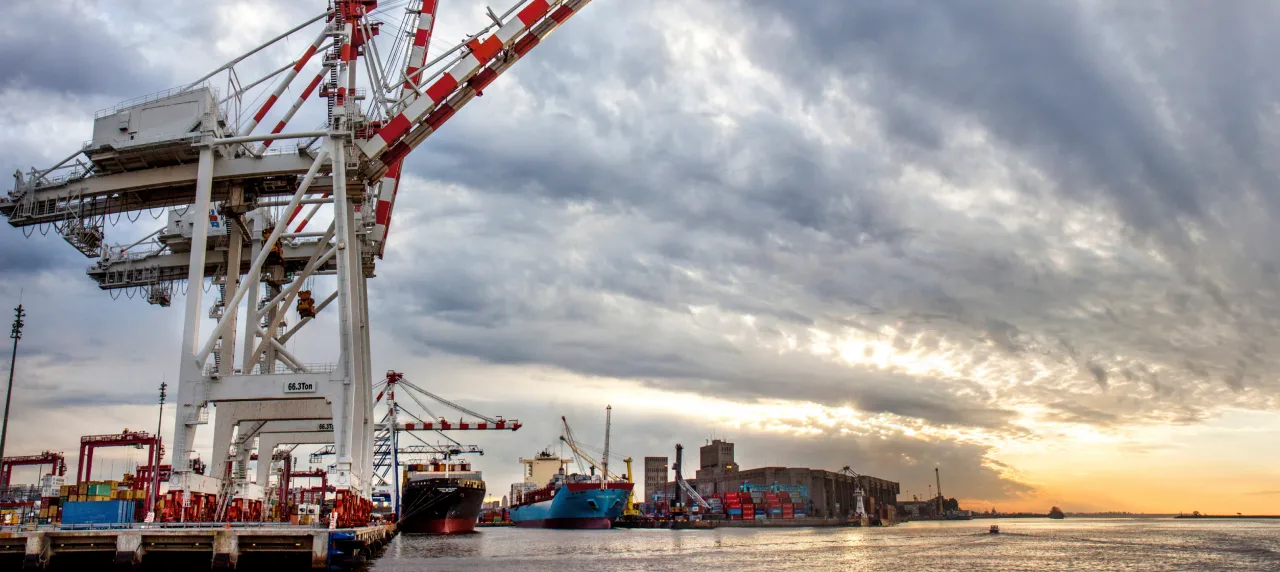
| Feature | Description |
|---|---|
| Description | Situated on the Río de la Plata (River Plate) estuary, in the Ensenada Partido of Buenos Aires Province, Argentina. It is located approximately 60 km southeast of Buenos Aires City. |
| Port Authority | Consorcio de Gestión del Puerto La Plata (CGPLP) – The Port Management Consortium of La Plata. |
| Port Type | River/Estuary Port, serving as a deep-water port within the Río de la Plata system. It handles a variety of cargo, with a significant focus on petrochemicals. |
| Key Role | Historically a significant general cargo port, it has evolved into a major hub for the petrochemical industry due to the presence of the YPF refinery (the largest in Argentina) within its jurisdiction. It also serves as a gateway for containers and project cargo, and has potential for further development in logistics and industrial activities. |
| Historical Significance | The Port of La Plata was inaugurated in 1890, designed to complement or even rival the Port of Buenos Aires. It played a crucial role in Argentina's early export economy, particularly for agricultural products. Its strategic location and infrastructure were vital for the industrial development of the La Plata region. The YPF refinery, established in 1925, cemented its role as a petrochemical hub. |
| Major Construction | Significant recent construction has focused on the TECPLATA container terminal, which involved substantial dredging and infrastructure development to accommodate large Post-Panamax vessels. There are ongoing efforts to modernize and expand existing facilities, including berths and storage, to support the petrochemical industry and general cargo. |
| Cargo Volume | TECPLATA, the container terminal, has a nominal capacity of 450,000 TEUs annually. The YPF refinery handles massive volumes of crude oil and refined products. Overall cargo volume is in the millions of tons annually, primarily driven by petrochemicals and containers. |
| Main Exports | Refined petroleum products (gasoline, diesel, lubricants), petrochemicals, agricultural products, and general cargo. |
| Main Imports | Crude oil (for the YPF refinery), chemicals, fertilizers, machinery, and general cargo. |
| Trade Routes | Connected to other ports on the Río de la Plata and Paraná River, providing access to Argentina's interior. It also serves international trade routes, particularly those connecting with Brazil, Europe, North America, and Asia, through its container terminal and bulk cargo operations. |
| Multimodal Connectivity |
River/Sea – Direct access to the Río de la Plata and thence to the Atlantic Ocean. Road – Well-integrated with the national highway network, including the Autopista La Plata-Buenos Aires, facilitating truck transport to and from major population centers and industrial zones. Rail – Connected to the national railway system (mainly Ferrocarril General Roca lines), although rail cargo movement has seen varying levels of activity over time. Pipeline – Extensive pipeline networks connect the YPF refinery to various production sites and distribution points, critical for the port's core petrochemical operations. Air – Served by La Plata Airport for general aviation and cargo, with proximity to Ezeiza International Airport for broader air cargo operations. |
The Port of La Plata, located on the southern shore of the Río de la Plata estuary, southeast of Buenos Aires, has a history intimately tied to the administrative and industrial development of the Province of Buenos Aires. The city of La Plata itself was founded in 1882 to serve as the new provincial capital after the city of Buenos Aires was federalized as the national capital. This strategic move necessitated the creation of a modern port to support the burgeoning city and surrounding industrial areas.
Construction of the port began shortly after the city’s founding. Its design and development focused on creating deep-water facilities capable of handling various cargo types, including petroleum products and raw materials for the growing industrial zone. Over time, the port expanded to include specialized areas like the Gran Dock, primarily for tankers, and facilities for a cold rolling steel mill, showcasing its integral role in the region’s heavy industry and energy sector.
Port Numbers
The Port of La Plata is identified by the UN/Locode ARLPG. While it operates in the shadow of the larger Port of Buenos Aires, it is a significant contributor to Argentina’s trade, particularly in specific sectors. It can handle vessels with a maximum draught of around 9.15 meters (30 feet) in its main channel, and some sources indicate deeper drafts for certain areas. The port complex includes dedicated berths for oil tankers and bulk cargo, with overall cargo handling figures varying depending on industrial output and energy demands. It’s an active port of freight to Argentina with regular arrivals and departures of various vessel types, including chemical tankers, oil products tankers, bulk carriers, and container ships.
Exports
- Petroleum Products
Given the presence of a significant refinery and petrochemical plants, refined petroleum products and chemicals are major exports.
- Manufactured Goods
Products from the cold rolling steel mill, including steel sheets and wire, are exported.
- Other Industrial Goods
Depending on the industrial activities in the region, other manufactured and semi-finished goods may also be exported.
Imports
The imports through La Plata are crucial for feeding its industrial base and meeting regional energy demands. These typically include:
- Crude Oil
Raw material for the refinery.
- Chemicals
Various chemicals and intermediates for the petrochemical industry.
- Raw Materials for Industry
Materials like coils for the steel mill and other industrial components.
- Fuels and Lubricants
For local consumption and distribution.
- Machinery and Equipment
For industrial upgrades and maintenance.
Port of Mar del Plata
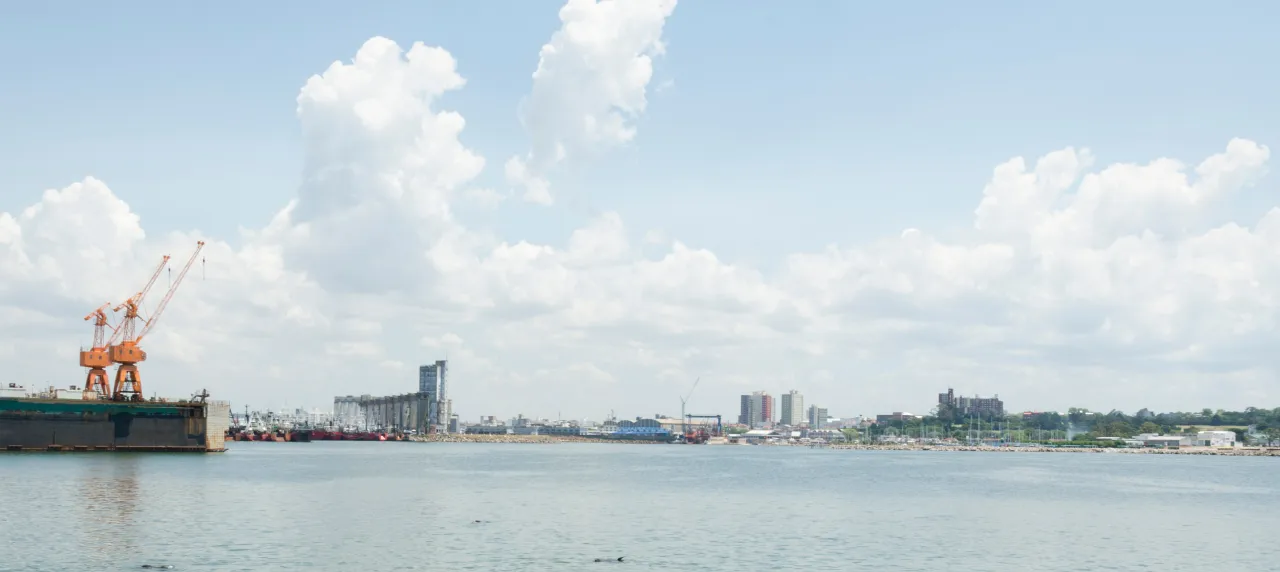
| Feature | Description |
|---|---|
| Location | Situated on the Atlantic coast of Argentina, in the southeast of Buenos Aires Province, approximately 404 km south of Buenos Aires City. It is a coastal port directly on the Atlantic Ocean. |
| Port Authority | Consorcio Portuario Regional de Mar del Plata (Regional Port Consortium of Mar del Plata). |
| Port Type | Seaport, primarily a fishing port, but also handles some general cargo and cruise ship traffic. It is a natural harbor protected by breakwaters. |
| Key Role | The leading fishing port in Argentina serves as the main hub for the country's extensive fishing fleet and associated seafood processing industry. It handles a significant portion of Argentina's fish and seafood exports. It also has a role in tourism as a major seaside resort, with cruise ship calls during peak season. |
| Historical Significance | Its development began in the late 19th and early 20th centuries. While Mar del Plata became known as a tourist resort, the port was officially built and inaugurated in 1916. It rapidly grew to become the heart of the Argentine fishing industry, attracting waves of European immigrants (particularly from Italy and Spain) who contributed to its growth and character. |
| Major Construction | Major construction efforts focus on maintaining and deepening the access channels and basins to accommodate the fishing fleet and commercial vessels. Projects include improvements to berths, cold storage facilities, and infrastructure to support the fishing industry. There are also ongoing discussions and plans for expanding port capabilities and enhancing logistics. Shipyards within the port (like SPI Astilleros) undertake shipbuilding, repair, and transformation projects for various vessels. |
| Cargo Volume | The cargo volume for the Port of Mar del Plata is predominantly dominated by fish and seafood. While specific, consolidated annual figures for overall cargo (including non-fishing) are not always readily available, it handles hundreds of thousands of tons of fish annually. For container traffic, in Q1 2023, Mar del Plata handled a relatively small volume of 70 TEUs, indicating its primary focus is not containerized general cargo. |
| Main Exports | Fish, seafood (fresh, frozen, and processed products), fishmeal, and some grain and frozen meats. |
| Main Imports | Primarily smaller quantities of timber and supplies necessary for the fishing industry and local economy. |
| Trade Routes | Mainly serves domestic coastal routes for fresh fish distribution and international routes for frozen seafood exports, connecting to markets in Europe, Asia, and other parts of the Americas. |
| Multimodal Connectivity |
Sea – Direct access to the Atlantic Ocean. Road – Well-connected to the national highway network, notably National Route 2 to Buenos Aires, facilitating the transport of fresh and processed seafood to domestic markets. Rail – Has historical railway connections, though modern rail freight activity is less prominent for general cargo compared to other major Argentine ports, but it serves local industrial needs. Air – Served by Astor Piazzolla International Airport (Mar del Plata Airport), which handles both passenger and some cargo flights, especially relevant for high-value fresh seafood exports. |
The Port of Mar del Plata, located on the Atlantic coast of Buenos Aires Province, has a distinct history compared to Argentina’s other major ports, being primarily driven by the growth of fishing and tourism rather than solely agricultural exports. While the city of Mar del Plata was officially founded in 1874 as a bathing resort, the need for a formal port to support both the nascent fishing industry and the growing number of visitors became evident.
The port’s construction began in 1906, led by a French company, and it was officially inaugurated in 1916. This significant undertaking provided much-needed infrastructure for the burgeoning fishing fleet and the associated processing industries. Over the decades, Mar del Plata solidified its reputation as Argentina’s leading fishing port, with continuous development of specialized facilities like cold storage and processing plants. Beyond fishing, the port also became a secondary hub for some general cargo and even military activities, playing a role during World War II with the surrender of German U-boats.
Port Numbers
The Port of Mar del Plata is identified by the UN/Locode ARMDQ. It is primarily a fishing port, boasting the largest fishing fleet in Argentina. While it doesn’t handle the vast bulk cargo volumes of Rosario or Bahía Blanca, its activity is consistently high due to the nature of the fishing industry. The port has three commercial basins and multiple berths for various vessel types, including a significant number of fishing trawlers, as well as some general cargo and tanker vessels. The maximum draught for vessels entering the port is generally around 6.4 to 7.6 meters (21-25 feet), with deeper anchorage depths available.
Exports
- Seafood
The primary export is a wide variety of fresh, frozen, and processed fish and seafood products, including hake, squid, shrimp, and other species caught in the rich South Atlantic waters. Mar del Plata’s port infrastructure, including specialized cold storage and processing plants, is specifically designed to handle these perishable goods efficiently for international markets.
- Fishmeal and Fish Oil
By-products from the fishing industry are also exported.
- Agricultural Products
To a lesser extent, some agricultural products from the surrounding rural areas may be exported, often by coastal shipping or through connections to larger ports.
- Manufactured Goods
Some processed foods and manufactured goods from the local industrial park (e.g., textiles, packaging machinery, medical implements) may also utilize the port for export.
Imports
Imports through Mar del Plata typically support the local industries, fishing fleet, and the city’s general needs:
- Fishing Equipment
Nets, gear, vessel parts, and other supplies for the large fishing fleet.
- Fuels and Lubricants
For the fishing vessels and local transportation.
- General Cargo
Various consumer goods, machinery, and industrial components required by the city and its surrounding industries.
- Timber
Small quantities of timber are sometimes imported.
Conclusion
In conclusion, Argentina’s major ports are more than just transit points; they are strategic assets that underpin the nation’s economic ties to the global market. By understanding the unique strengths of each port and leveraging the expertise of experienced freight forwarders, businesses can effectively streamline their shipping operations and capitalize on the vast trade opportunities Argentina offers.
Contact Atlantic Project Cargo if you need a reliable freight forwarder to Argentina. We handle container, bulk, breakbulk, and other types of shipping to Argentina.
Read More
